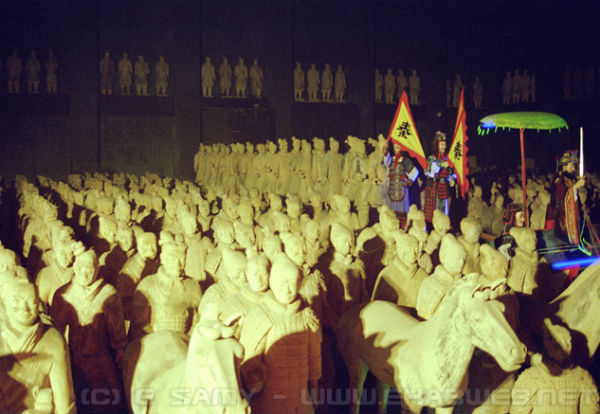Like the Tang Dynasty era in China which ended in 907, Tang Dynasty City in Singapore is now a thing of the past.
The S$100 million theme park was opened in 1992 in Jurong as a re-creation of the ancient Chinese capital, Chang ‘An, now present day Xi’an.
Surrounded by a life size replica of the Great Wall of China (3 meters high), this once 12ha theme park was the size of 18 football fields.
Within the walls, lay a village that sought to imitate this ancient capital.
Life size replicas of the Terracotta warriors were on display in the village.
Replicas of furniture and traditional Chinese decorations like lanterns and lion statues evocative of that period adorned the pagodas and entrances to grand temples and buildings.
In the centre of the village lay a pond, surrounded by intricately designed architecture and carefully planted bamboo plants.
[[{“type”:”media”,”view_mode”:”media_original”,”fid”:”40368″,”attributes”:{“alt”:””,”class”:”media-image”,”height”:”402″,”typeof”:”foaf:Image”,”width”:”600″}}]]
See more photos of the abandoned theme park on Lomography.com
Traditional Chinese architecture of that era dotted the landscape beyond the wall, giving it an otherworldly feel. If it weren’t for the tourists in modern clothes and their cameras, the city might have seemed displaced from time.
In its heyday, the city opened with much flourish. Unfortunately, a combination of high admission prices, subpar attractions and the Asian Financial Crisis in 1997 caused it to fall to disarray.
By 1999, it was closed
[[{“type”:”media”,”view_mode”:”media_original”,”fid”:”40370″,”attributes”:{“alt”:””,”class”:”media-image”,”height”:”404″,”style”:”line-height: 1.538em;”,”typeof”:”foaf:Image”,”width”:”600″}}]]
Shot by Daniel Cheong in 2007 after the theme park closed
Initially, there were talks of bringing a 1,500 year old Shaolin Temple with its warrior monks into the city to breathe new life into the attraction.
Three local companies had signed a Memorandum of Understanding in April 2001 to potentially convert Tang Dynasty City into a ‘holistic lifestyle holiday resort’. However, by 2007 it remained undeveloped with no concrete plans put in place to save it.
The city languished in abandonment until 2008 when it was finally demolished.
Since then, property industry experts have suggested developing a third Integrated Resort without the casino if the entire Jurong Lake area is redeveloped.
This strategic move would boost tourism by taking advantage of the site’s proximity to Johor and the Causeway.
While plans are inconclusive and largely kept out of public scrutiny until they are more concrete, one can’t help but wonder how the doomed city might have turned out if circumstances had been different.
[[{“type”:”media”,”view_mode”:”media_original”,”fid”:”40369″,”attributes”:{“alt”:””,”class”:”media-image”,”height”:”400″,”typeof”:”foaf:Image”,”width”:”600″}}]]
Now, all that is left is a poignant pang of regret at not being able to see this ruined city except through a handful of photographs.
Perhaps it is ironic that the pictures showed Tang Dynasty City as a pale shadow of its former self.
Much like how the actual era had slumped in its later years before its collapse in 907 due to the Huang Chao Uprising, Tang Dynasty City lay abandoned until it was finally put out of its misery by the landlord.
Before it was demolished, the Great Wall grew dirty – the barricades erected to keep trespassers out long since succumbed to the ravages of time.
The vases and statues of villagers have collapsed and lay in shattered heaps not far from their original sites. The steps leading up to the temples and inns that were painfully crafted were covered in moss and shrubbery.
The stones dulled and became coarse.
The once regal bridges cracked and peeled under the sun. The waters in the lakes and ponds stagnated while the manicured man made gardens and parks lost their picturesque quality to the encroaching jungle.
Wax statues and the replica of the impeccable terracotta army lay broken and scattered all over the abandoned city. The scene is reminiscent of a terrible war that had left the city and its riches plundered and ravaged.
Grass and trees had grown wildly; taking back the city and making this one-time derelict replica truly seem like a village abandoned to time.
Top photo: Ehab Samy
Original story by: Christopher Chitty via Property Guru




